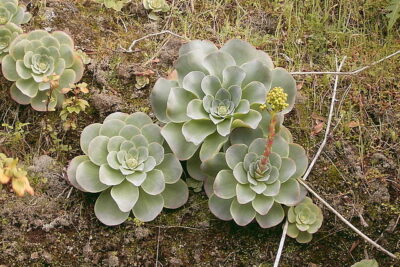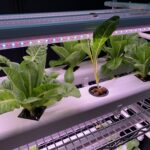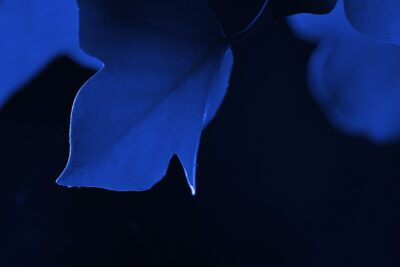
Optimal Indoor Lighting for Succulents: Sunlight or Not?

Succulents have become increasingly popular as houseplants due to their unique and vibrant appearance. However, one crucial aspect of caring for indoor succulents is providing them with the right amount and type of light. While succulents are known for their ability to thrive in arid and sunny conditions, replicating the ideal lighting conditions indoors can be a challenge. This article will delve into the topic of optimal indoor lighting for succulents, exploring whether natural sunlight alone is sufficient or if artificial lighting is necessary.
We will discuss the light requirements of succulents and the role sunlight plays in their growth and development. We will also explore the limitations and benefits of relying solely on natural sunlight for indoor succulents. Additionally, we will examine the various types of artificial lighting options available and how they can be used to supplement or replace natural sunlight for optimal succulent growth. By the end of this article, readers will have a better understanding of the factors to consider when it comes to providing the best lighting conditions for their indoor succulents.
- Provide succulents with at least six hours of sunlight per day
- Place succulents near windows or in well-lit areas
- Use artificial grow lights if natural sunlight is insufficient
- Choose grow lights with a spectrum similar to natural sunlight
- Use grow lights for 12-16 hours per day
- Adjust the height of the grow lights to match the succulents' needs
- Monitor the succulents for signs of too much or too little light
- Rotate the succulents regularly to ensure even light exposure
- Avoid placing succulents too close to heat sources or drafts
- Use reflective surfaces to maximize the light available to the succulents
- Frequently Asked Questions
Provide succulents with at least six hours of sunlight per day
Succulents are known for their ability to thrive in arid and sunny conditions. In their natural habitat, succulents receive ample sunlight throughout the day, allowing them to photosynthesize and grow properly. Therefore, it is crucial to provide your indoor succulents with at least six hours of direct sunlight per day to ensure their optimal growth and health.
When it comes to indoor lighting for succulents, sunlight is the best and most natural option. Sunlight provides a full spectrum of light that includes all the necessary wavelengths for photosynthesis. This means that your succulents will receive the ideal balance of light intensity and quality to fuel their growth.
If you have large windows or a south-facing window, placing your succulents near them is an excellent idea. These areas usually receive the most sunlight throughout the day. However, be mindful of any obstructions that may cast shadows on your succulents, as consistent direct sunlight is essential.
What if I don't have enough natural sunlight?
If you live in an area with limited natural light or your home lacks suitable windows for succulents, you can supplement their light requirements with artificial lighting. While not as optimal as sunlight, artificial lighting can still help your succulents thrive indoors.
When using artificial lighting, it's best to choose a full spectrum grow light. These lights mimic the natural sunlight by emitting a balanced combination of red, blue, and white light. Position the grow light about 12 inches above your succulents and provide them with 12 to 14 hours of artificial light per day.
 Can Succulents Thrive Indoors Without Sunlight?
Can Succulents Thrive Indoors Without Sunlight?Common mistakes to avoid
- Insufficient light: Succulents that don't receive enough light will stretch and become leggy as they try to reach for light. This weakens their structure and makes them more prone to disease and pests.
- Overexposure to sunlight: While succulents love sunlight, too much direct exposure can scorch their leaves. If you notice signs of sunburn, such as brown or white spots on the leaves, move your succulents to a spot with filtered or indirect sunlight.
- Inconsistent lighting: Succulents require a consistent light schedule to establish a healthy growth pattern. Avoid constantly moving them around or changing their lighting conditions, as this can disrupt their growth and lead to stress.
By providing your succulents with the optimal amount of sunlight or artificial lighting, you can ensure their long-term health and beauty. Remember to monitor their light requirements regularly and make adjustments accordingly. With the right lighting, your indoor succulents will thrive and bring a touch of nature to your living space.
Place succulents near windows or in well-lit areas
Succulents are known for their ability to thrive in arid conditions, but when it comes to indoor lighting, they still have specific requirements. To ensure the optimal growth and health of your succulents, it is important to place them near windows or in well-lit areas.
Why is lighting important for succulents?
Like all plants, succulents require light for photosynthesis, the process through which they convert light energy into chemical energy to fuel their growth. Adequate lighting is crucial for succulents as it directly affects their ability to produce food and thrive.
Types of lighting for succulents
When it comes to lighting options for succulents, there are a few options to consider:
- Natural sunlight: One of the best sources of light for succulents is natural sunlight. Place your succulents near windows that receive bright, indirect sunlight for a significant portion of the day. South-facing windows are usually the best, as they provide the most intense light.
- Artificial grow lights: If you don't have access to adequate natural sunlight, or if your succulents are placed in a location far from windows, you can use artificial grow lights. LED grow lights are a popular choice as they emit the specific wavelengths of light that plants need for photosynthesis. Position the lights close to the succulents, ensuring they receive light for around 12-14 hours per day.
Signs of inadequate lighting
It is essential to monitor your succulents for signs of inadequate lighting. Some common signs include:
- Stretching: Succulents that are not receiving enough light may start stretching or elongating in an attempt to reach more light. This can result in leggy or weak growth.
- Color fading: Insufficient lighting can cause the vibrant colors of succulents to fade. They may appear pale or washed out instead of their usual vibrant hues.
- Leaf dropping: If succulents are not receiving enough light, they may shed their leaves or become more prone to leaf drop.
Keep a close eye on your succulents and make necessary adjustments to their lighting conditions to ensure they receive the optimal amount of light for their specific needs. Remember, striking the right balance between natural sunlight and artificial lighting is key to keeping your succulents happy and thriving indoors.
 Can Succulents Flourish with Grow Lights?
Can Succulents Flourish with Grow Lights?Use artificial grow lights if natural sunlight is insufficient
When it comes to providing optimal indoor lighting for your succulents, sunlight is undoubtedly the best source. However, not all indoor spaces receive adequate sunlight throughout the day, especially during the winter months or if your succulents are placed in a room with limited windows.
If natural sunlight is insufficient, you can rely on artificial grow lights to ensure that your succulents receive the right amount of light they need to thrive. These lights are specifically designed to mimic the spectrum and intensity of sunlight, providing a suitable alternative for indoor succulent cultivation.
Choosing the right artificial grow lights
There are various types of grow lights available in the market, each with its own advantages and disadvantages. Here are a few popular options:
- Fluorescent lights: These lights are affordable and energy-efficient, making them a popular choice among indoor gardeners. They come in different spectrums, including cool white, warm white, and daylight. For succulents, it is recommended to use fluorescent lights with a spectrum that includes blue and red light.
- LED lights: LED lights are highly efficient and have a longer lifespan compared to fluorescent lights. They also offer more precise control over the light spectrum, allowing you to tailor the lighting to the specific needs of your succulents. Look for LED lights that emit a combination of blue and red light for optimal growth.
- High-Intensity Discharge (HID) lights: HID lights, such as metal halide and high-pressure sodium lights, are known for their high intensity and are commonly used in commercial settings. While they can provide excellent light for succulents, they generate more heat and consume more energy compared to fluorescent or LED lights.
Providing the right light intensity and duration
When using artificial grow lights, it is important to consider both the intensity and duration of light exposure for your succulents. Succulents generally require bright light, but too much intensity can cause sunburn or damage to their leaves.
As a general guideline, place your succulents 6 to 12 inches away from the grow lights to provide them with sufficient light without risking overheating. Additionally, make sure to adjust the duration of light exposure based on the specific needs of your succulent species. Most succulents require around 12 to 14 hours of light per day.
Remember to regularly monitor your succulents' response to the artificial lighting and make adjustments as needed. If you notice signs of sunburn, such as brown or discolored patches on the leaves, consider reducing the light intensity or increasing the distance between the lights and your succulents.
 Can Mother of Thousands Succulents Thrive Indoors?
Can Mother of Thousands Succulents Thrive Indoors?While natural sunlight is the ideal choice for indoor succulents, artificial grow lights can be a great alternative when sunlight is insufficient. By choosing the right type of grow lights and providing the appropriate light intensity and duration, you can create an optimal indoor lighting environment for your succulents to thrive.
Choose grow lights with a spectrum similar to natural sunlight
When it comes to providing optimal indoor lighting for your succulents, choosing the right grow lights is crucial. While natural sunlight is the best source of light for plants, it may not always be feasible to provide sufficient sunlight indoors. In such cases, grow lights can be a great alternative to ensure your succulents receive the necessary light to thrive.
Why is the spectrum of light important?
Succulents require a specific spectrum of light for photosynthesis, growth, and overall health. The spectrum of light refers to the range of wavelengths that a light source emits. Natural sunlight provides a full spectrum of light, containing different colors ranging from red to blue. Each color within this spectrum plays a unique role in plant growth and development.
What types of grow lights mimic natural sunlight?
When selecting grow lights for your succulents, it's important to choose ones with a spectrum similar to natural sunlight. There are two main types of grow lights that closely mimic the sun's spectrum:
- Full-spectrum LED grow lights: LED lights are energy-efficient and can provide a wide range of colors to mimic the sun's spectrum. Look for LEDs labeled as "full-spectrum" or "daylight" to ensure you're getting the right type of light for your succulents.
- T5 fluorescent lights: T5 fluorescent lights are another popular option for indoor plant lighting. They emit a balanced spectrum of light and are suitable for succulents that require moderate to high light levels.
Consider the light intensity and duration
 Growing Succulents on Trees: A Unique Outdoor Garden Idea
Growing Succulents on Trees: A Unique Outdoor Garden IdeaIn addition to the spectrum of light, it's essential to consider the intensity and duration of light exposure for your succulents. Succulents generally require bright, indirect light for at least 6-8 hours a day. Adjust the distance between the grow lights and your plants to provide the optimal light intensity. Keep in mind that succulents may need less light during the winter months when their growth slows down.
Placement and rotation of succulents
It's important to place your succulents in an area where they can receive the maximum amount of light. Consider placing them near a south-facing window or directly under the grow lights. If using grow lights, rotate your succulents every few weeks to ensure even light distribution and prevent them from leaning or stretching towards the light source.
Monitoring and adjusting
Keep a close eye on your succulents and monitor their response to the grow lights. If you notice signs of light deficiency (e.g., elongated stems, pale leaves), you may need to adjust the light intensity or duration. On the other hand, if you notice signs of light burn (e.g., scorched leaves), you may need to increase the distance between the grow lights and your plants.
While natural sunlight is ideal for succulents, it's not always feasible indoors. By choosing grow lights with a spectrum similar to natural sunlight, considering light intensity and duration, and monitoring your plants' response, you can provide optimal indoor lighting for your succulents and ensure their healthy growth.
Use grow lights for 12-16 hours per day
When it comes to growing succulents indoors, one of the most important factors to consider is the lighting. Succulents, like most plants, require a certain amount of light to thrive and grow. While natural sunlight is always the best option, it may not always be feasible, especially if you live in an area with limited sunlight or have limited access to windows. In such cases, using grow lights can be a great alternative.
 Easy Tips for Indoor Succulent Care: A Guide to Succulent Success!
Easy Tips for Indoor Succulent Care: A Guide to Succulent Success!Grow lights provide artificial light that mimics the natural spectrum of sunlight, ensuring that your succulents receive the necessary light for photosynthesis. When using grow lights, it is recommended to provide your succulents with 12-16 hours of light per day. This allows them to receive an adequate amount of light to thrive and grow.
It is important to note that not all grow lights are created equal. There are various types of grow lights available in the market, including fluorescent, LED, and high-intensity discharge (HID) lights. Each type has its own pros and cons, so it is essential to choose the right one for your succulents.
Fluorescent lights
Fluorescent lights are a popular choice for indoor gardening due to their affordability and energy efficiency. They come in two main types: T5 and T8. T5 fluorescent lights are more powerful and provide a higher light output, making them ideal for succulents. They also produce less heat, reducing the risk of burning your plants.
T8 fluorescent lights, on the other hand, are less powerful but still suitable for succulents with lower light requirements. They are more readily available and less expensive than T5 lights, making them a good option for beginners or those on a budget.
LED lights
LED lights have gained popularity in recent years due to their energy efficiency and long lifespan. They produce little heat, making them safe to use in close proximity to your succulents. LED lights come in various spectrums, including full spectrum and red/blue spectrum. Full spectrum LED lights provide a balanced light output that closely mimics natural sunlight, while red/blue spectrum lights are more focused on specific wavelengths that promote plant growth.
While LED lights may be more expensive upfront, they are known to consume less energy, resulting in long-term cost savings. Additionally, their durability and long lifespan make them a worthwhile investment for avid indoor gardeners.
HID lights
HID lights are the most powerful grow lights available and are typically used for large-scale indoor gardening operations. They produce intense light and heat, making them suitable for succulents with high light requirements. However, they can be expensive to purchase and operate, making them less practical for small-scale or home gardening.
 Can Succulents Survive Outdoors All Year?
Can Succulents Survive Outdoors All Year?When using HID lights, it is important to keep them at a safe distance from your succulents to prevent burning or heat damage. It is recommended to consult the manufacturer's guidelines or seek advice from experienced indoor gardeners when using HID lights.
Providing your succulents with the optimal indoor lighting is crucial for their growth and overall health. Whether you choose fluorescent, LED, or HID lights, make sure to provide them with 12-16 hours of light per day for optimal results. Remember to monitor your plants closely and adjust the lighting as needed, keeping in mind that each succulent species may have slightly different light requirements.
Adjust the height of the grow lights to match the succulents' needs
When it comes to growing succulents indoors, one of the most important factors to consider is the lighting. While succulents are known for their ability to thrive in bright and sunny conditions, indoor lighting can sometimes fall short in providing the optimal light levels for these plants. This is where grow lights come into play.
Grow lights are artificial light sources that are designed to mimic the natural sunlight that plants need to carry out photosynthesis. By using the right type of grow lights and adjusting their height, you can create an optimal indoor lighting environment for your succulents.
Choosing the right type of grow lights
When it comes to choosing grow lights for your succulents, there are a few options to consider. The most popular types of grow lights for indoor gardening include fluorescent lights, LED lights, and high-intensity discharge (HID) lights.
Fluorescent lights are a cost-effective option that can provide sufficient light for most succulents. They come in two main types: compact fluorescent lights (CFLs) and T5 fluorescent lights. CFLs are energy efficient and can fit into standard light sockets, making them a convenient choice for small spaces. T5 fluorescent lights, on the other hand, are more powerful and provide a broader spectrum of light.
LED lights are another popular option for indoor succulent lighting. They are energy efficient, have a longer lifespan, and can be customized to emit specific light wavelengths that are beneficial for succulent growth. LED lights also produce less heat, reducing the risk of damaging your plants.
 Can a Star Flower Succulent Survive and Thrive Indoors?
Can a Star Flower Succulent Survive and Thrive Indoors?HID lights, such as metal halide (MH) and high-pressure sodium (HPS) lights, are more powerful and emit intense light. They are commonly used in commercial greenhouses and can be suitable for larger succulent collections. However, they can be more expensive and generate more heat, requiring proper ventilation.
Adjusting the height of the grow lights
Once you have chosen the type of grow lights that best suits your succulents' needs, it is crucial to adjust their height accordingly. The height of the grow lights determines the intensity of light reaching your plants.
As a general rule of thumb, succulents should be placed closer to the grow lights during their active growing season and slightly farther away during their dormant period. This is because succulents require more light during their active phase to fuel their growth and development.
Monitor your succulents closely and observe any signs of stress or stretching. If your succulents start to stretch or lean towards the light source, it is an indication that they are not receiving enough light and the grow lights should be positioned closer to them. On the other hand, if you notice signs of sunburn or bleaching, it means that the light intensity is too high, and the grow lights should be moved farther away.
Remember to regularly adjust the height of the grow lights as your succulents grow and change their light requirements. By providing the optimal lighting conditions, you can ensure that your indoor succulents thrive and maintain their beautiful form.
Monitor the succulents for signs of too much or too little light
When it comes to providing optimal indoor lighting for your succulents, it's crucial to monitor them closely for signs of both too much and too little light. Succulents are known for their ability to thrive in bright and direct sunlight, but they can also tolerate lower light conditions.
 Can Succulents Survive Outdoors in Winter?
Can Succulents Survive Outdoors in Winter?Signs of too much light:
- Leaf bleaching or yellowing
- Brown or scorched spots on the leaves
- Stunted growth
- Leaf drop
If you notice any of these signs, it's an indication that your succulents are receiving too much direct light. In such cases, it's important to provide some shade or move them to a location with filtered or indirect light.
Signs of too little light:
- Stretching or elongation of stems
- Leaning towards the light source
- Pale or faded coloration
- Sparse or leggy growth
These signs suggest that your succulents are not receiving enough light. In such cases, consider moving them to a brighter location or supplementing their light with artificial grow lights specifically designed for plants.
It's important to note that different succulent species have varying light requirements. Some thrive in full sun, while others prefer partial shade. Research the specific lighting needs of your succulents to ensure they receive the appropriate amount of light for optimal growth and health.
Rotate the succulents regularly to ensure even light exposure
When it comes to providing optimal indoor lighting for your succulents, one important aspect to consider is ensuring that they receive even light exposure. Rotating your succulents regularly is a simple yet effective way to achieve this.
 Are Succulents Harmless in Direct Sunlight Throughout the Day?
Are Succulents Harmless in Direct Sunlight Throughout the Day?Succulents have a natural tendency to grow towards the direction of light. If they are constantly exposed to light from the same direction, they may start to lean or stretch towards it, resulting in an uneven growth pattern. By rotating your succulents every few weeks, you can help them grow straight and maintain a balanced shape.
When rotating your succulents, it is important to do so gently to avoid causing any damage to the leaves or stems. Start by identifying the side of the plant that receives the most light. Carefully lift the succulent from its pot, supporting the base of the plant, and turn it in the opposite direction. Place it back in its pot, ensuring that it is stable and secure.
By rotating your succulents regularly, you can ensure that all sides of the plant receive an equal amount of light. This will promote even growth and prevent any one side from becoming weak or leggy.
Additionally, rotating your succulents can also help prevent etiolation. Etiolation is a common issue that occurs when succulents do not receive enough light and start to stretch out in search of it. By exposing all sides of the plant to light, you can minimize the risk of etiolation and keep your succulents compact and healthy.
Remember to observe your succulents closely after rotating them. If you notice any signs of stress or sunburn, such as discoloration or wilting, you may need to adjust their light exposure accordingly. Each succulent species has different light requirements, so it is essential to research and understand your specific succulent's needs.
Overall, rotating your succulents regularly is a simple but crucial step in providing optimal indoor lighting. By ensuring even light exposure, you can help your succulents thrive and maintain their beautiful, compact form.
Avoid placing succulents too close to heat sources or drafts
When it comes to creating the optimal indoor environment for your succulents, it's crucial to consider their placement in relation to heat sources and drafts. Succulents thrive in warm and dry conditions, but excessive heat or cold drafts can have detrimental effects on their growth and overall health.
 Can Succulent Plants Thrive in Low-Light Environments?
Can Succulent Plants Thrive in Low-Light Environments?To ensure your succulents are placed in the right spot, it's important to avoid placing them too close to heat sources such as radiators, heaters, or fireplaces. These sources can create a microclimate of excessive heat, causing the soil to dry out quickly and potentially damaging the leaves of the succulents.
Similarly, succulents should be kept away from drafts or areas with fluctuating temperatures. Cold drafts can lead to temperature shocks, which can be particularly harmful to succulents that are adapted to warm and arid climates. If you notice a drafty area in your home, it's best to avoid placing your succulents there.
By ensuring that your succulents are placed in an area free from heat sources and drafts, you can create an optimal indoor environment that mimics their natural habitat and promotes healthy growth.
Use reflective surfaces to maximize the light available to the succulents
When it comes to providing optimal lighting for your indoor succulents, one important factor to consider is maximizing the amount of light they receive. While natural sunlight is the best source of light for plants, it may not always be feasible to provide direct sunlight indoors. In such cases, you can use reflective surfaces to help redirect and amplify the available light.
Reflective surfaces, such as mirrors or white walls, can be strategically placed around your succulents to bounce and scatter the light. This technique helps to increase the overall amount of light reaching your plants, ensuring they receive the necessary energy for photosynthesis.
By placing a mirror or reflective material behind your succulents, you can effectively double the amount of light they receive. The reflected light will reach the lower leaves and stems, which are often shaded from direct light sources. This can prevent the succulents from elongating and becoming leggy, as they will receive light from multiple angles.
Additionally, white walls or surfaces can act as natural reflectors, diffusing the light and creating a more even distribution throughout the space. This is particularly beneficial if your succulents are placed in a corner or an area with limited access to direct sunlight.
It is important to note that while reflective surfaces can enhance the lighting conditions for your succulents, they should not be a substitute for natural sunlight. If possible, try to provide your plants with at least a few hours of direct sunlight each day. Supplementing natural light with reflective surfaces can help create an optimal environment for your indoor succulents to thrive.
Frequently Asked Questions
1. Can succulents survive with indoor lighting alone?
Yes, succulents can survive with indoor lighting alone, but they may not thrive as they would with natural sunlight.
2. What type of indoor lighting is best for succulents?
Full-spectrum LED grow lights are the best choice for indoor succulents as they provide the necessary light spectrum for their growth.
3. How long should I keep the lights on for my indoor succulents?
On average, succulents require 12-14 hours of light per day. It's recommended to use a timer to ensure consistent lighting schedules.
4. Can I place my succulents near a window for natural sunlight?
Yes, placing succulents near a window can provide them with natural sunlight. However, it's important to ensure they are not exposed to direct, intense sunlight, which can cause sunburn.
If you want to read more articles similar to Optimal Indoor Lighting for Succulents: Sunlight or Not?, you can visit the Indoor and Outdoor Care category.






You Must Read